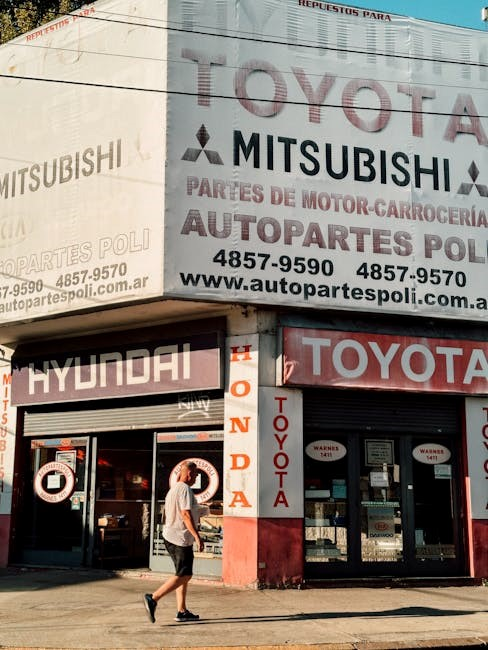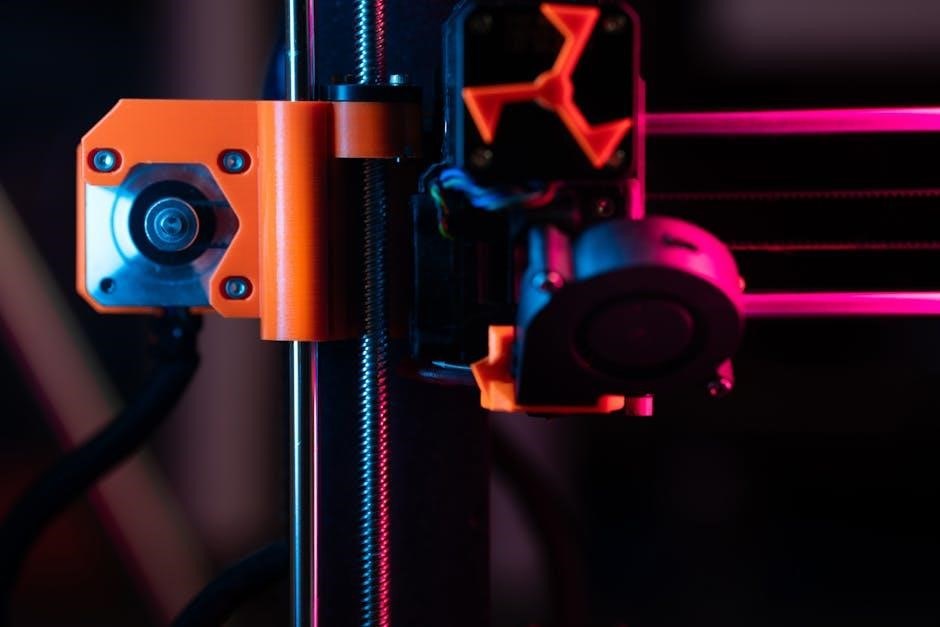Regular maintenance is crucial for the Toyota Tundra to ensure optimal performance, longevity, and safety. It helps prevent costly repairs and maintains resale value effectively.
1.1 Importance of Regular Maintenance
Regular maintenance is essential to ensure the Toyota Tundra operates efficiently and safely. It prevents premature wear on critical components, reduces the risk of unexpected breakdowns, and maintains optimal fuel efficiency. Neglecting routine maintenance can lead to costly repairs, decreased performance, and potential safety hazards. By following the recommended maintenance schedule, owners can protect their investment, extend the vehicle’s lifespan, and ensure reliability for both on-road and off-road driving. Regular checks also help identify and address issues early, preventing minor problems from escalating into major ones. Consistent upkeep enhances the Tundra’s resale value and ensures it continues to deliver the power and durability Toyota is known for.
1.2 Overview of Toyota Tundra Maintenance Schedule
The Toyota Tundra maintenance schedule is a structured plan designed to ensure optimal performance and longevity. It outlines specific services to be performed at various mileage intervals, such as every 5,000 to 10,000 miles for oil changes, depending on synthetic or conventional oil use. Tire rotations are typically recommended every 5,000 miles to ensure even tread wear. Fluid replacements, including engine coolant and transmission fluid, are scheduled at intervals of 30,000 to 60,000 miles. Annual inspections are also advised to check belts, hoses, and brakes. This schedule helps prevent unexpected breakdowns and ensures the vehicle runs efficiently. Adhering to it is crucial for maintaining reliability and aligning with Toyota’s high standards for durability and performance.

Regular Maintenance Schedule

The Toyota Tundra’s regular maintenance schedule includes oil changes every 5,000 to 10,000 miles, tire rotations, and fluid checks to ensure optimal vehicle performance and longevity.
2.1 Oil Change Intervals
Toyota Tundra oil change intervals are typically every 5,000 to 10,000 miles, depending on driving conditions. Using synthetic oil allows for longer intervals, up to 10,000 miles. Regular oil changes ensure engine lubrication and prevent wear. It’s important to follow Toyota’s guidelines to maintain performance and longevity. Always use the recommended oil type for optimal results. Neglecting oil changes can lead to serious engine damage. For extreme driving conditions, such as frequent towing or off-road use, more frequent oil changes may be necessary. Proper maintenance ensures your Tundra runs smoothly and efficiently for years to come.
2.2 Tire Rotation and Inspection
Tire rotation and inspection are essential for maintaining even tread wear and ensuring safety. Toyota recommends rotating tires every 5,000 to 8,000 miles, depending on driving conditions. This helps distribute wear evenly and maximizes tire life. During inspections, check for signs of uneven wear, cracks, or damage. Proper tire pressure should also be verified for optimal performance. Regular inspections can prevent issues like blowouts or loss of traction. Always refer to the owner’s manual for the correct rotation pattern and inspection guidelines. Keeping tires in good condition enhances handling, fuel efficiency, and overall vehicle safety. Neglecting tire maintenance can lead to premature wear and increased risk of accidents. Stay proactive to ensure your Tundra’s tires remain in top shape.
2.3 Fluid Checks and Replacements
Regular fluid checks and replacements are vital for maintaining your Toyota Tundra’s performance and longevity. Engine oil should be changed every 5,000 to 10,000 miles, depending on synthetic versus conventional oil. Transmission fluid, coolant, and brake fluid should also be inspected and replaced at recommended intervals to prevent overheating and system failure. Additionally, differential fluid should be serviced every 60,000 miles to ensure proper axle lubrication. Always use genuine Toyota parts to maintain emissions standards and performance. Consult your owner’s manual for specific schedules and guidelines. Proper fluid maintenance prevents corrosion, lubricates components, and ensures optimal vehicle operation. Regular checks can also detect leaks early, avoiding costly repairs. Stay on top of fluid replacements to keep your Tundra running smoothly and reliably.

Owner’s Responsibility
Owners must perform daily pre-drive checks, adhere to maintenance schedules, and address recalls promptly to ensure the Toyota Tundra operates safely and efficiently over its lifespan.
3.1 Daily Pre-Drive Checks
Daily pre-drive checks are essential for ensuring the Toyota Tundra’s safety and performance. Start by inspecting the tire pressure, adjusting it as needed for optimal traction and fuel efficiency. Check the oil level using the dipstick, ensuring it’s within the recommended range to prevent engine damage. Also, examine the coolant level to avoid overheating issues. Verify that all lights, including brake lights and turn signals, are functioning properly. Look for any signs of fluid leaks under the vehicle and ensure the brake fluid level is adequate. Finally, test the brakes by gently pressing the pedal to ensure they respond smoothly and effectively. These simple checks can prevent major issues down the road and ensure a safe driving experience. Regular inspections also help maintain the vehicle’s longevity and resale value. By making these checks a habit, owners can identify potential problems early and address them before they escalate. Consistency is key to preserving the truck’s reliability and performance over time.
3.2 Annual Inspections
Annual inspections are a critical part of maintaining the Toyota Tundra’s health and performance. Schedule a professional inspection to evaluate key components such as the cooling system, battery, and suspension. The technician will check for worn belts and hoses, inspect the brake pads and rotors, and ensure proper alignment of the wheels. Additionally, they will assess the condition of the exhaust system and catalytic converter. The inspection also includes a thorough review of the vehicle’s electrical systems, including the alternator and starter. Addressing issues early can prevent costly repairs and ensure the truck runs smoothly. Annual inspections are a proactive step in maintaining the Tundra’s reliability and performance, especially for owners who use their vehicles for heavy-duty tasks or off-road adventures. Regular inspections also help maintain the vehicle’s resale value and ensure safety on the road. Consistency in annual checks is vital for long-term vehicle health.

Essential Maintenance Tasks
Essential maintenance tasks for the Toyota Tundra include routine checks and replacements to ensure optimal performance and longevity. Regular oil changes, tire rotations, and fluid checks are vital. Battery maintenance, belt replacements, and brake care are also critical. These tasks prevent breakdowns and maintain reliability. Consistent upkeep ensures the Tundra operates efficiently and safely, whether for daily commutes or heavy-duty use. Proactive maintenance is key to preserving the vehicle’s value and functionality over time. Always follow the recommended schedule for best results. Regular inspections and timely repairs help avoid costly issues down the road. Keep your Tundra in top shape with dedicated care. Proper maintenance enhances both performance and durability, making it essential for all owners. Stay proactive to ensure your Tundra remains reliable and efficient for years to come. Essential tasks are the foundation of a well-maintained vehicle. Prioritize them to enjoy a trouble-free driving experience.
4.1 Battery Maintenance

Regular battery maintenance is essential to ensure reliable starting and electrical system performance in your Toyota Tundra. Inspect the battery terminals for corrosion and clean them if necessary to maintain good connections. Avoid deep discharges by keeping the battery charged, especially during extended periods of inactivity. Check the battery’s age and replace it every 5-7 years or as recommended by Toyota. Use a high-quality battery compatible with your Tundra’s specifications. Keep the battery tray secure and protected from extreme temperatures. If you notice dimming lights or slow engine cranking, have the battery tested promptly. Proper care extends the battery’s lifespan and prevents unexpected breakdowns. Always refer to your owner’s manual for specific guidelines tailored to your vehicle. Regular maintenance ensures consistent power delivery and prevents electrical system failures. A well-maintained battery is crucial for your Tundra’s overall performance and reliability. Stay proactive to avoid unexpected issues on the road.

4.2 Brake System Care
Proper brake system maintenance is critical for the safety and performance of your Toyota Tundra. Regularly inspect brake pads and rotors for wear, and replace them when necessary to prevent metal-to-metal contact, which can damage the braking system. Check the brake fluid level and top it off as needed, ensuring it meets Toyota’s specifications. Look for signs of brake wear, such as squealing noises or a spongy brake pedal, and address them promptly. Clean the brake components to remove dirt and corrosion, which can compromise braking efficiency. Replace the brake fluid every 30,000 to 50,000 miles to maintain optimal performance. Always consult your owner’s manual for Toyota-recommended maintenance intervals. Neglecting brake care can lead to costly repairs and safety risks, so stay proactive to ensure reliable stopping power.
4.3 Belt Replacements
Regular inspection and timely replacement of belts are essential for the smooth operation of your Toyota Tundra. The serpentine belt powers critical components like the alternator, water pump, and power steering system. Inspect belts every 10,000 miles for cracks, frays, or signs of wear. Replace them immediately if damage is detected, as a failed belt can lead to engine overheating or loss of power. Typically, belts should be replaced every 50,000 to 90,000 miles, depending on the manufacturer’s recommendations; Use genuine Toyota parts for reliability and longevity. Always consult your owner’s manual for specific guidelines. Neglecting belt replacements can result in costly repairs and unexpected breakdowns, so stay proactive to ensure your Tundra runs smoothly and efficiently.
Troubleshooting Common Issues
Common issues like oil leaks, brake wear, and battery problems can be identified early through regular checks. Addressing them promptly prevents costly repairs and ensures reliability.
5.1 Identifying Warning Signs
Identifying warning signs early is key to maintaining your Toyota Tundra’s health. Look for dashboard warning lights, such as the “Maintenance Required” or “Check Engine” light. Unusual noises, like grinding brakes or knocking engines, signal potential issues. Decreased performance, such as reduced fuel efficiency or rough idling, should not be ignored. Vibrations while driving or difficulty starting the engine also indicate problems. Regularly inspect for physical signs of wear, like uneven tire wear or fluid leaks. Addressing these issues promptly prevents minor problems from becoming major repairs. Always consult your owner’s manual for guidance on interpreting warning signs and scheduling necessary inspections. Vigilance ensures your Tundra runs smoothly and safely for years to come.

5.2 Resetting Maintenance Lights
Resetting maintenance lights on your Toyota Tundra is essential after completing scheduled services. Start by turning the ignition to the “ON” position without starting the engine. Use the steering wheel controls to navigate to the settings menu on the instrument cluster. Select “Maintenance” and choose the type of service performed, such as oil change or tire rotation. Confirm the reset, and the light should turn off. If the light persists, consult your owner’s manual or visit a certified technician. Properly resetting these lights ensures accurate maintenance tracking and prevents unnecessary alarms. Always follow the manufacturer’s instructions to avoid errors in the system. Regular resets help maintain your Tundra’s reliability and performance over time.

Regular maintenance is key to ensuring your Toyota Tundra performs optimally, remains reliable, and retains its value over time. By following the recommended maintenance schedule and staying proactive about inspections and repairs, you can prevent costly issues and enjoy a safer, more efficient driving experience. The Toyota Tundra is designed to withstand rigorous use, but it requires consistent care to deliver its full potential. Whether for work or play, proper upkeep ensures your Tundra remains a dependable companion for years to come. Always refer to your owner’s manual for specific guidelines, and consider consulting a certified technician for complex tasks. With dedication to maintenance, your Tundra will continue to serve you faithfully, mile after mile.



